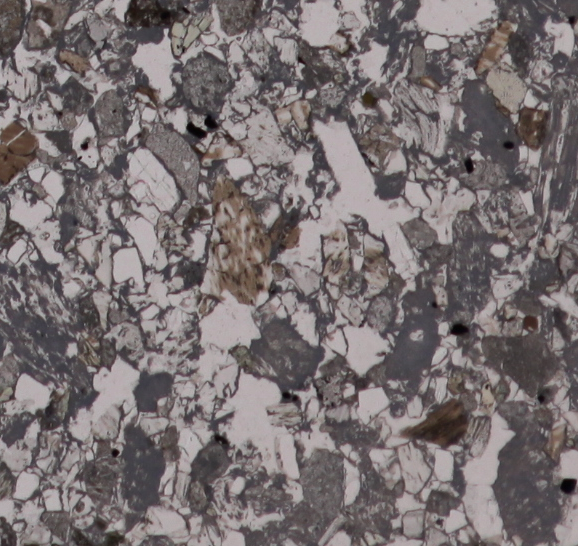
Invisible Rock!
Well, perhaps not quite invisible, but if you take a very, very thin piece of rock it is possible to see right through it! Now when I say thin, I really do mean thin! But who needs to see through rocks anyway? It isn’t just for fun! No, rocks are made up of grains or crystals of different materials and geologists need to know what the rocks are made of so they can understand how and where they were formed.
Think about a piece of rock that is 10 centimetres (cm) square – a nice big satisfying chunk of rock that you could use in a wall. It might be full of glassy quartz crystals, white or pink feldspar crystals and shiny black or brown or creamy white micas.
Now imagine cutting it into 10 slices of 1 centimetre (cm) thick each. These would be just right (if you had a few more) for using around a fireplace or on a tiled worktop! Could you see through it? No! Definitely not! They would still be opaque.
Now imagine slicing one of these tiles into 10 thinner slices of 1millimetre (mm) thick each! These would break very easily if you dropped them and wouldn’t be any use for a wall or a worktop! And you still wouldn’t be able to see through it! If there were some big quartz crystals they might let a bit of light through (transluscent) but not fully transparent!
Now imagine if you had a really clever machine that could slice this already thin sheet into about 30 thinner sheets! – Now you would be able to see through it! And now we wouldn’t be using millimetres (mm) to measure the slices but microns (um)! There are a thousand microns (um) in a millimetre (mm). A piece of paper is about 100 microns (um) so 10 sheets piled on top of each other would be about 1 millimetre (mm). Each of our slices of rock would be just 30 microns (um) thick.
Of course it would be impossible to really slice up a piece of rock like this, so a small block of rock is stuck onto a glass microscope slide and slowly sliced away, and then ground down until there is just this tiny, tiny slice left behind on the glass slide. Then scientists can put these slides, called ‘thin sections’ under a microscope and see the individual grains and crystals, shapes and forms, colours and textures in the rock and identify what is there! It is quite magical and very, very clever!